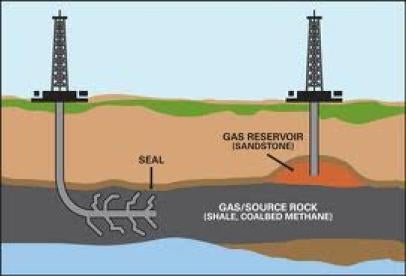The wait is over in New York on fracking. At a cabinet meeting today Governor Cuomo and his Commissioners of Health and Environmental Conservation announced that the long-awaited Final Supplemental Generic Environmental Impact Statement will be released and establish that HVHF cannot move forward in New York. The decision document will be contained in what is known as a SEQRA Findings Statement, which can be released no less than ten days after the issuance of the SGEIS.
The decision was based on an assessment by the New York State Health Commissioner that there were too many unanswered questions about the health effects of fracking. The Health Commissioner likened fracking to second hand smoke in airplanes, an apparent suggestion that allowing it in parts of the state that support the activity has the potential to pollute the areas that seek to ban it. No doubt there will be many who question the Health Department’s conclusion that this single industrial activity, unlike mining, underground gasoline tank storage, pesticide application and the like, cannot possibly be performed safely under any possible regulatory scheme. The New York State Department of Environmental Conservation Commissioner took a different tack from the Health Commissioner, noting that under Department of Environmental Conservation’s currently contemplated restrictions and local zoning bans only 37% of the State where the Marcellus Shale Play is located would have the potential to be drilled, and thus would not be the economic boon anticipated by some in the state. In a state the size of New York, 37% of the shale play still represents millions of acres of potential land.
Given the substantial questions that this decision raises, Governor Cuomo was likely correct when he predicted that the State’s decision would result in numerous lawsuits. The first would undoubtedly challenge the ultimate state decision, embodied in the SEQRA Findings, to ban HVHF. However, given the scientific complexity of the issue and the deferential standard of review that courts apply in reviewing challenges to government decision making, the climb is likely going to be very steep for opponents of the ban to prevail in such a challenge.
Perhaps more interesting, and likely to play out over a longer period of time, would be challenges to the ban from landowners asserting that the decision amounts to an illegal confiscation by the state of their property interests, more commonly known as a regulatory taking under United States Supreme Court precedent. New York has long been an inhospitable venue to regulatory takings claims, but the clear ban announced by the Governor today is likely to give landowners nothing to lose in commencing such challenges. Critical issues in such challenges will be less about the wisdom of the ban and more about whether the action denies substantially all economically viable use to the property in question. That question may hinge on whether the property rights in question consist of entire title to the property, or simply the mineral rights.
The disparate treatment of HVHF and other industrial activities raises other potential litigation issues. Proponents of HVHF may assert challenge on that basis. Opponents of other kinds of developmental assert that approvals should be withheld because the other activity is more risky than the prohibited HVHF. The more environmental risk assessment becomes disconnected from scientific rigor, the more risk to all activity in New York.
Stay tuned.




 i
i


